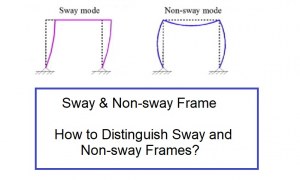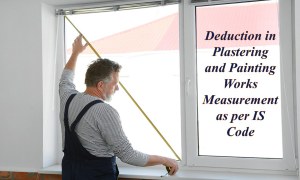🕑 Reading time: 1 minute
Slate tiles are beautiful, and unique tiles originated from mountainous regions. Each Slate tile has one of a kind feature that makes every piece distinct. Slate tile flooring is an expensive option both in terms of material cost as well as labor cost. This article explains a brief idea on the procedure for installing a slate tile step by step.
Contents:
Materials Required to Install Slate Tiles on Floor
The complete materials and equipment required to install a slate tile are:- Slate tile
- Mortar
- Grout
- Stone Sealant
- Cement board and cement board screws
- Tape
- T-Square
- Line Chalk
Procedure to Install Slate Tiles
The installation of slate tiles on floors include the following steps:1. Preparation of the Subfloor
Cleaning the Subfloor Surface
The subfloor must be clean and smooth before installing the slate tiles over it. Any defects and weak areas on the subfloor result in future defects like tile chipping and cracking.Plywood floors
Sand the plywood floors to create a smooth and even surface.Concrete Floors
Smooth the concrete subfloor surfaces with any depressions or cracks by using a filler. After preparing the subfloor, wait until the liquid agent applied on the surface dries. Clean the surface once again after drying to avoid the presence of any dirt particles or remainings of agents.2. Protective Layer
Cement board sheets installed on the subfloors, protects the lower surfaces of the floor. Cement board sheets are waterproof materials that help in the prevention of moisture penetration in between the tiles. The cement board runs from one end of the floor to the other end. Place the tiles side by side. Fill the uneven spaces by using small pieces cut out from the cement board using a shop knife. The cement boards are secured to the plywood floors using screws of 1 1/4th screws. It can be installed on concrete floors using mortar. The mortar and screws are modes to make the subfloor surface and cement board remain in proper adhesion. Concrete floors can also employ any self-leveling waterproofing membrane as an alternative to the cement board. One forth inch gap is provided between the cement board and the wall piece and 1/8inch gap between the adjacent cement boards to allow for expansion during the hot season.3. Reference Lines
The centerline of the longest side and shorter side wall of the room is determined and marked. Lines bisecting the long walls and short walls define the center of the room. The line hence divide the room into four quadrants. Use a T-square to check whether the lines are perpendicular.4. Dry Layout of the Slate Tiles
Before installing slate tiles, it must be laid dry in the room and arrange them so that colors and patterns sink together and get an attractive surface. Once the arrangement is satisfied, stack the tiles in the same order. While stacking, avoid chances of scratches.5. Spreading Mortar Layer
The mortar is mixed in the plastic bucket using water as per the ratio provided by the manufacturer. Use a wooden stick to stir the ingredients in the bucket until the mix looks homogeneous and consistent. The mortar combination is made 20 to 30 minutes before the work start else the mix can set. Take a scoop of mortar and place it on the flat end of the notched trowel. Start to spread it on the cement board surface. Start from the center point of the room and move to one quadrant. Take the first scoop little more than that is required by a single tile. Now, take the edge of the trowel and make groves on the laid mortar layer. These grooves make a powerful hold between the slate tile and the subfloor.
6. Place the Tiles
Take the first tile and place it over the spread mortar. Press the tile with a force so that the grooves made collapses. Twist the tile slightly to get more grip. Tap the tile with a rubber mallet if it demands more pressure. Do not get any mortar on the surface of the tile. If so, wipe it immediately with a damp cloth.



